Judi Lynn
Judi Lynn's JournalBolivia’s fast-melting glaciers are leaving behind lakes that could cause catastrophic floods
Bolivia’s fast-melting glaciers are leaving behind lakes that could cause catastrophic floods
October 20, 2016 10.33am EDT
Bolivia’s glaciers have shrunk by more than 40% in the past few decades. This puts further pressure on an already stressed water supply, while the meltwater lakes left behind risk collapsing in sudden and catastrophic outburst floods.
That’s the conclusion of a new study of the country’s glaciers I conducted with colleagues based in the UK and Bolivia. Our results are published in the journal The Cryosphere.
Although Bolivia sits in the tropics, the Andes run through the country like a spine. Many mountains exceed 6,000 metres, among the highest outside of south and central Asia, meaning that glaciers can exist here. Indeed, Bolivia contains around 20% of the world’s so-called “tropical glaciers”.
But these glaciers are very sensitive to the effects of a warming climate. Our study shows that Bolivian glaciers have shrunk by around 43% since the mid-1980s – a period marked by increasing temperatures. We estimate that these glaciers will be much diminished by the end of the century.
More:
http://theconversation.com/bolivias-fast-melting-glaciers-are-leaving-behind-lakes-that-could-cause-catastrophic-floods-67396
2 agrarian activists murdered in Honduras
Source: Associated Press
2 agrarian activists murdered in Honduras
Oct 19, 9:05 PM EDT
By CHRISTOPHER SHERMAN
Associated Press
MEXICO CITY (AP) -- International condemnation poured into Honduras on Wednesday over the murder of two agrarian activists the day before.
Jose Angel Flores, leader of the United Farmworkers Movement of Aguan, or MUCA by its Spanish initials, and member Silmer Dionisio George were shot in northeast Honduras after leaving a meeting in the town of Tocoa.
In recent years, MUCA has seized thousands of acres of land, much of it privately held palm oil plantations that previously had been cooperatives cultivated by the same farmworkers.
U.S. Ambassador to Honduras James Nealon condemned the killings in a statement Wednesday. He said he had offered U.S. resources to the Honduran government to help find those responsible.
Read more: http://hosted.ap.org/dynamic/stories/L/LT_HONDURAS_ACTIVISTS_KILLED?SITE=AP&SECTION=HOME&TEMPLATE=DEFAULT&CTIME=2016-10-19-19-06-26
Evidence of first chief indicates Pacific islanders invented a new society on city they built of cor
Evidence of first chief indicates Pacific islanders invented a new society on city they built of coral and basalt
October 18, 2016 by Margaret Allen
New dating on the stone buildings of Nan Madol suggests the ancient coral reef capital in the Pacific Ocean was the earliest among the islands to be ruled by a single chief.
The discovery makes Nan Madol a key locale for studying how ancient human societies evolved from simple societies to more complex societies, said archaeologist Mark D. McCoy, Southern Methodist University, Dallas. McCoy led the discovery team.
The finding was uncovered as part of a National Geographic expedition to study the monumental tomb said to belong to the first chief of the island of Pohnpei.
McCoy deployed uranium series dating to determine that when the tomb was built it was one-of-a-kind, making it the first monumental scaled burial site on the remote islands of the Pacific.
Read more at: http://phys.org/news/2016-10-evidence-chief-pacific-islanders-society.html#jCp
[center] 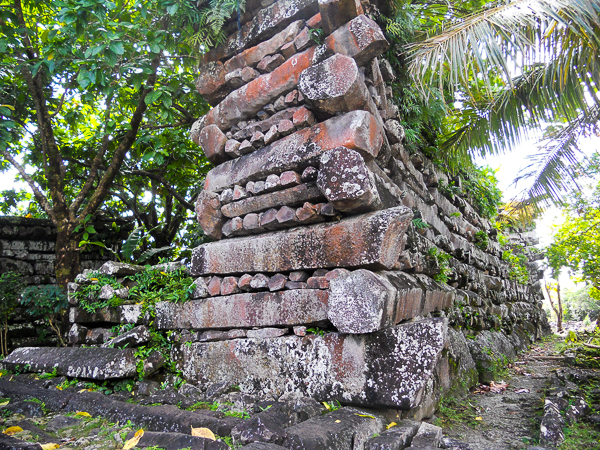
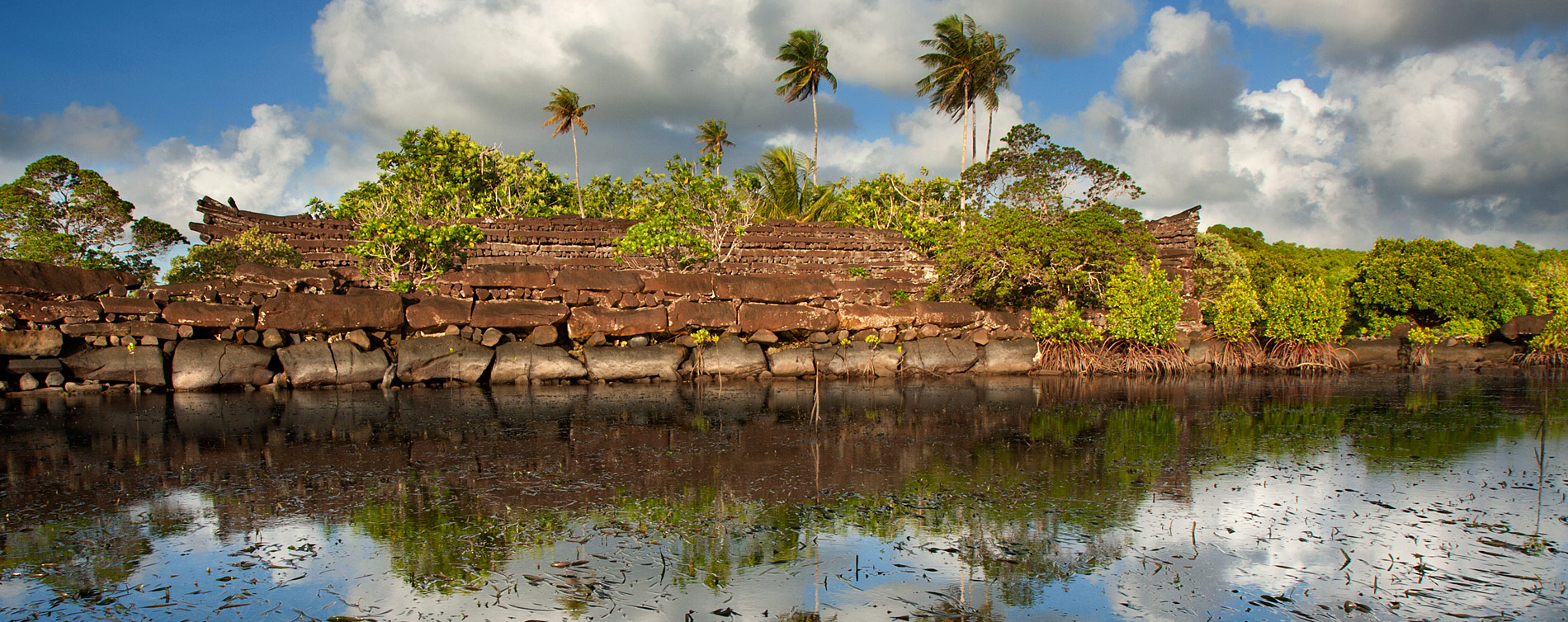

More images:
https://www.google.com/search?hl=en&site=imghp&tbm=isch&source=hp&biw=1574&bih=759&q=Nan+Madol&oq=Nan+Madol&gs_l=img.12..0l10.472.2123.0.3559.2.2.0.0.0.0.159.302.0j2.2.0....0...1.1.64.img..0.2.298.hhnvIV-KcTI#imgrc=_
Drones and virtual reality combine to recreate mysterious archaeological site
Drones and virtual reality combine to recreate mysterious archaeological site
Nick Lavars
|12 hours ago
The rise of virtual reality has created portals to some truly far-out, futuristic worlds, but some are also exploring how the technology can allow us to peer into the past. With the help of drones, Australian archaeologists are creating a virtual replica of the Plain of Jars, an ancient site littered with mysterious stone jars in Laos, so that inquisitive minds can strap on headsets and explore from afar.
The Plain of Jars stretches over hundreds of square kilometers of green and hilly countryside around the town of Phonsavan, Laos. It takes its name from the large stone jars scattered throughout the area, and has drawn the interest of archaeologists due to the fact that no one really knows how or why they came about.
Researchers from the Australian National University (ANU) and Monash University were looking for a place to test out their new mapping technology, called Cave2, and settled on the Plain of Jars due to a pending application to have it listed as a UNESCO World Heritage site.
Cave2 is a system that takes purpose-shot drone footage and turns it into virtual replicas of archaeology dig sites, by having the drone snap a set of 3D images every 10 cm (3.93 in) and then pumping the data into a digital mould.
More:
http://newatlas.com/drones-virtual-reality-archaeology/46006/
[center] 
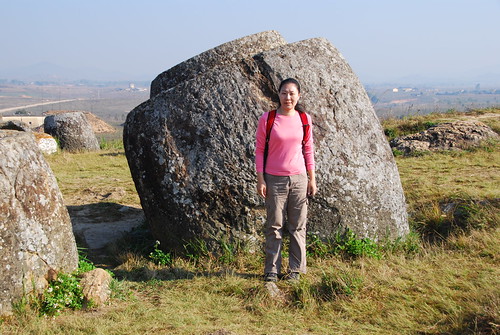




Full Circle in the Americas: Indigenous Resistance and Resurgence in the 21st Century
Full Circle in the Americas: Indigenous Resistance and Resurgence in the 21st Century
October 14, 2016
by Kent Paterson
For the second year in a row, Albuquerque, New Mexico, celebrated Indigenous People’s Day instead of Columbus Day. And like last year, marchers organized by the Red Nation and allies took to the streets to demand justice and uphold Indigenous liberation.
On Monday, October 10, about 200 people marched through downtown Albuquerque chanting and carrying signs and banners that variously proclaimed “We stand with Standing Rock! #No DAPL,” Standing Rock: Today’s Wounded Knee“, “The Revolution will be Indigenized” and “Abolish the Entrada. The Reconquista was not bloodless!,” a reference to the annual Santa Fe Fiesta’s annual celebration of Spanish conquistador Juan de Onate’s reoccupation of Santa Fe in 1692 after the Pueblo Revolt of twelve years earlier.
As the crowd surged into the crispness of an early evening under a beautiful autumn sky, a chorus of voices rang out with the demand “Free Peltier!” An American Indian Movement (AIM) activist imprisoned for decades, Leonard Peltier was found guilty of the 1975 murder of two FBI agents on the Pine Ridge Reservation in South Dakota, a conviction supporters contend is a frame-up. But in a growing movement sweeping Indian Country and beyond, supporters are calling on President Obama to grant Peltier executive clemency before his presidency ends next January. To get their message across, some of the Albuquerque demonstrators wore black t-shirts imprinted with the words and numbers:
“Clemency Now
Call the White House
202-456-1111”
A counter-campaign waged by the FBI Agents Association and other supporters of slain FBI agents Jack Coler and Ron Williams is urging President Obama not to grant Peltier clemency. The Duke City marchers paused at the steps of the Albuquerque Police Department, currently under scrutiny by a court-ordered, independent monitor after a 2014 Department of Justice investigation found a pattern of excessive deadly force. Sporting a red banana across her face, a woman attired in a camouflage shirt over a black dress asked the crowd why she was masked.
“It’s because the Indian wars in the U.S. never ended,” she answered her own question, condemning “the police state” for attacking water protectors at North Dakota’s Lakota Standing Rock Reservation attempting to stop the nearly 1,200 mile-long Dakota Access Pipeline that’s slated to transport fracked oil upstream from Lakota land and down a Midwestern corridor.
More:
http://www.counterpunch.org/2016/10/14/full-circle-in-the-americas-indigenous-resistance-and-resurgence-in-the-21st-century/
Secret Mayan tombs lend rare insight into rule of mysterious 'snake kings'
Secret Mayan tombs lend rare insight into rule of mysterious 'snake kings'
Jade-inlaid teeth and inscribed tibia unearthed in Holmul ruins of Guatemala hint at influence and power of Mayan dynasty known for snakehead emblem
Alan Yuhas
@alanyuhas
Friday 14 October 2016 05.30 EDT
Archaeologists in Guatemala have unearthed two Maya tombs that “miraculously escaped” looters’ tunnels underneath two Maya pyramids, where researchers hope that jade-inlaid teeth, an inscribed human tibia and a puzzling sun-god pendant could give insight into the rule of ancient “snake kings”.
The tombs were found at the ancient ruins of Holmul, 300 miles north of Guatemala City, and date back to about 650-700AD, the era of Maya dominance before their mysterious collapse a few centuries later. Inside one was a puzzling artifact of a Maya dynasty that archaeologists call the snake kings, after the snakehead emblem of their house – a family that ruled 100 miles to the north, far from the tombs found in Holmul.
One tomb is a vaulted chamber, built into a pyramid that was constructed to surround an older, fifth-century building. Inside was the skeleton of a middle-aged person whose teeth had jade inlays, a custom of Maya royalty, and an inscribed human tibia, “a very, very rare find”, archaeologist Francisco Estrada-Belli told the Guardian.
“It could be from an ancestor or captive of war,” he said, though the researchers will have to wait for an epigrapher with scanning equipment to read the badly eroded text.
More:
https://www.theguardian.com/science/2016/oct/14/mayan-tombs-snake-kings-holmul-guatemala
[center]
Homul frieze
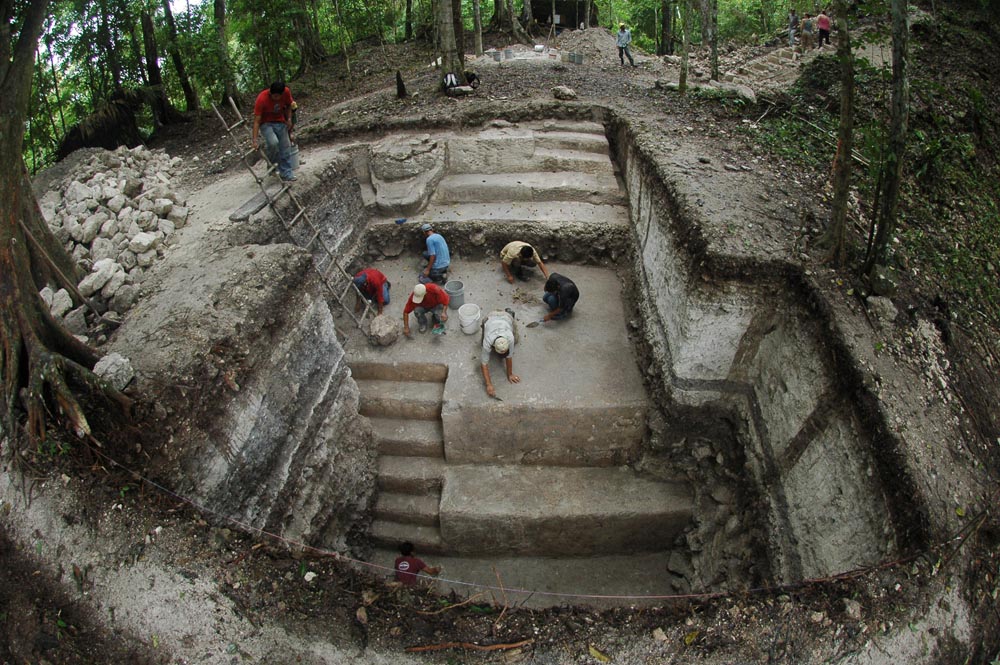

 [/center]
[/center]
The Tikal and the Mayan refuse to give up their mysterious secrets
The Tikal and the Mayan refuse to give up their mysterious secrets
Travel Writer: Brendan Butler tries to uncover what happened to a people and a civilisation
about 14 hours ago
Brendan Butler
Tikal, in the north of Guatemala in Central America, is a relatively newly discovered wonder of the ancient world, 90 per cent of which still remains to be revealed. Tikal is to Guatemala what the Pyramids are to Egypt – they are both national symbols of their respective countries.
The nine-hour drive north from Guatemala city to Tikal in a pickup truck was an ordeal, the potholed roads reminiscent of Irish roads pre-Celtic tiger days .
The ruins of the Mayan city are now part of the Tikal National Park, situated within the one-million-hectare Mayan Biosphere Reserve created in 1990 to protect this valuable cultural area from further degradation mainly due to illegal logging and the slash and burn agricultural practices of the area.
More:
http://www.irishtimes.com/life-and-style/travel/the-tikal-and-the-mayan-refuse-to-give-up-their-mysterious-secrets-1.2829776
[center] 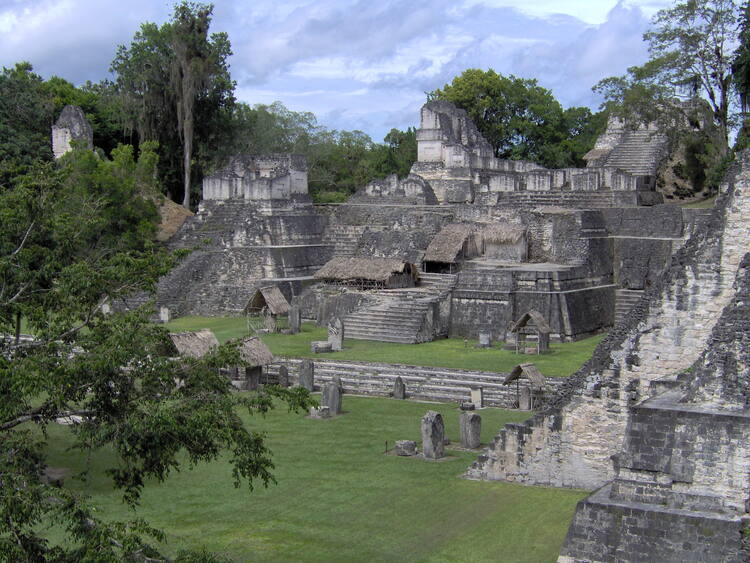

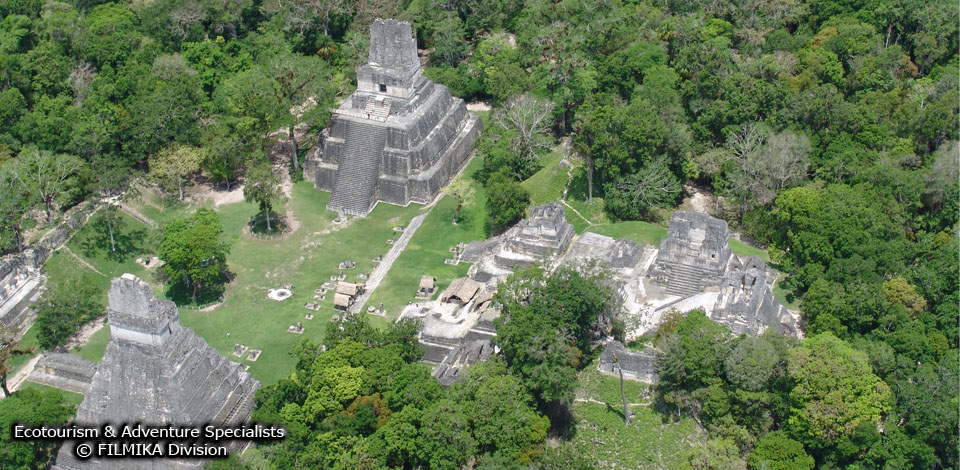
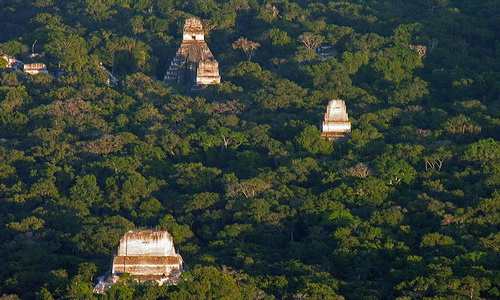
Tikal National Park.
Conquering Choquequirao: the long walk to Peru’s lesser-known ‘lost city’
Conquering Choquequirao: the long walk to Peru’s lesser-known ‘lost city’
Mark Johanson
Lonely Planet Writer
Rambling along the bumpy road from Cuzco out to Cachora, it becomes abundantly clear that I’ve left the feverish Machu Picchu crowds behind and am now entering into the less polished corners of the Peruvian Andes. These are the fabled hills of the Inca, though they’re not the ones most visitors fly across oceans to see.
There’s only one reason travelers go out of their way to visit the rural village of Cachora, and it’s to see a set of ruins that lie just out of sight on the far end of the Apurímac Valley: Choquequirao. Said to be up to three-times the size of the more widely-known Machu Picchu, these ruins astoundingly see only about a dozen visitors each day.

Serene Choquequirao is the lonely 'sister' of Machu Picchu © Mark Johanson / Lonely Planet
I’ve always wondered what it must have been like to visit Angkor Wat, Chichén Itzá or Machu Picchu before the roads and tour buses arrived. Then I found out about Choquequirao, a citadel so far up in the Andes of Peru that archaeologists have only freed about 30% of it from the jungle.
Before American explorer Hiram Bingham ever laid eyes on Machu Picchu, he was whacking his way through the Apurímac Valley, surveying the remarkable carcass of its so-called sister city. Scared off by the prospect of a grueling, four-day round-trip journey, however, few tourists have bothered to visit over the years. That could change now that the government has announced plans to build a cable car across the valley that would cart up to 3,000 visitors per day to the ruins in a trips lasting just 15 minutes.
More:
https://www.lonelyplanet.com/peru/cuzco-and-the-sacred-valley/cuzco/travel-tips-and-articles/conquering-choquequirao-the-long-walk-to-perus-lesser-known-lost-city
Condor chick born in wild flies from nest at California park
Condor chick born in wild flies from nest at California park
Updated 10:50 pm, Wednesday, October 12, 2016

Photo: Gavin Emmons, AP
PAICINES, Calif. (AP) — A California condor chick has hatched in the wild, survived and flown out of its nest at Pinnacles National Park for the first time since the 1890s, officials said Wednesday.
The Santa Cruz Sentinel (http://bit.ly/2edTCWs ) reports the female bird, born in April, is not the first chick to be born in the park. But it is the first to survive long enough to leave the nest and begin its flight to adulthood.
"She is staying near the nest, doing lot of practice flights," said Rachel Wolstenholme, condor program manager at Pinnacles. "Her parents will help her learn how to fly and where to feed and how to interact with the other wild birds out there."
. . .
Scientists say it's a success story for North America's largest bird as it continues a slow but steady path from near extinction.
More:
http://www.chron.com/news/science/article/Condor-chick-born-in-wild-flies-from-nest-at-9966452.php#photo-11438028
The incredible otherwordly caterpillars of Ecuador
The incredible otherwordly caterpillars of Ecuador
Melissa Breyer (@MelissaBreyer)
Science / Animals
October 10, 2016

© Andreas Kay/flickr
From cute as a kitten to fierce as a dragon, these exquisite caterpillars prove there's no limit to bizarre when Mother Nature is driving.
Caterpillars are a wonder. The ever-so-curious larvae of butterflies and moths garner much more affection than other insect larvae, and there is little denying that they are really charming. Yes, they can inflict some serious stings and devour whole crops, but once they graduate to full-blown butterfly and moth status, they become important pollinators and part of a healthy ecosystem. Consider caterpillar-hood as the rebellious teen years.
One of the greatest challenges caterpillar face is that they are essentially slow-moving bundles of protein that make for excellent meals for their predators. Which is why they have developed all kinds of fancy tricks, like the aforementioned stinging thing as well as their array of looks which work to make them look larger, or scarier, or like other things, or hidden, and so on. All so clever, and all a delight to the nature lover with a soft-spot for larvae.
The following images show some of the extreme caterpillars of Ecuador, a place of astounding biodiversity. The photos were taken by scientist Andreas Kay, who has been documenting the diversity of life in Ecuador as an independent scientist since 2011 in order to raise more awareness for the treasures there, many of which are threatened by the destruction of tropical forests.
More:
http://www.treehugger.com/animals/incredible-otherwordly-caterpillars-ecuador.html?utm_source=feedburner&utm_medium=feed&utm_campaign=Feed%3A+treehuggersite+%28Treehugger%29
Profile Information
Member since: 2002Number of posts: 160,515